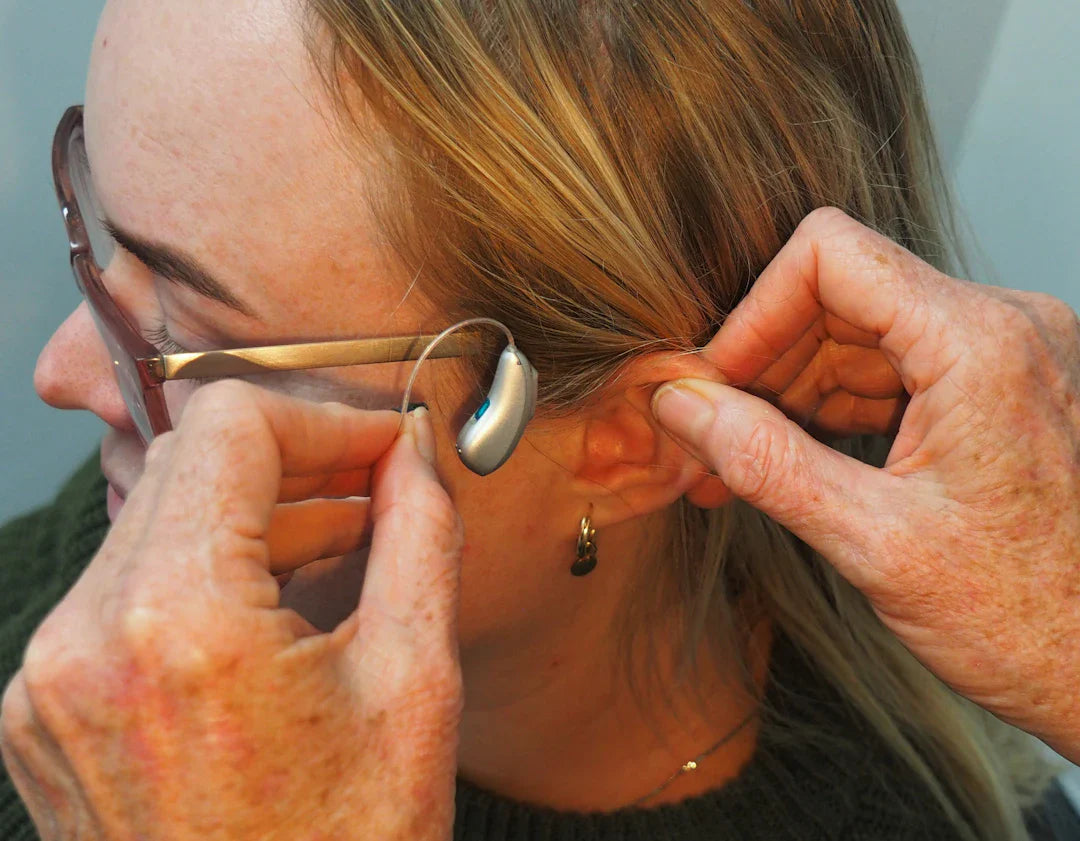Having trouble with your hearing aids? Don't worry - you're not alone. Many hearing aid users encounter common issues that can be quickly resolved without professional assistance. In this guide, we will walk you through some troubleshooting techniques to help you address these problems and get the most out of your hearing aids.
1. No Sound or Weak Sound
If your hearing aids are not producing any sound or the volume is too low, there are a few things you can check. First, ensure that the volume is turned up on both the hearing aids and any connected devices such as smartphones or televisions. Additionally, make sure that the hearing aids are properly inserted in your ears and that there is no earwax blocking the sound outlet. If the problem persists, check if the batteries are fully charged or replace them if needed.
2. Whistling or Feedback
Experiencing whistling or feedback from your hearing aids can be irritating and may affect your ability to hear clearly. This issue often occurs when the hearing aids aren't properly inserted in the ears. Try repositioning them and ensure they fit snugly. If the problem continues, check for earwax buildup or a loose fitting. In some cases, feedback can also stem from a malfunctioning device - in which case, contact a professional for assistance.
3. Discomfort or Pain
If you're experiencing discomfort or pain while wearing your hearing aids, it's essential to address this issue promptly. Discomfort can be caused by improperly fitted ear molds or ear tips. Adjust the fit or consult with an audiologist to ensure the hearing aids are suitable for your ears. Additionally, check for signs of irritation, such as redness or swelling - in which case, you might have an allergy to the materials used. Reach out to a hearing care professional for advice and possible alternatives.
4. Muffled or Distorted Sound
A common issue that hearing aid users encounter is a muffled or distorted sound. This could be due to a clogged sound outlet caused by earwax build-up. Clean the hearing aids carefully using a soft, dry cloth or a brush specifically designed for hearing aids. Avoid using water or cleaning solutions, as they can damage the device. If the problem persists, it might be time for a professional cleaning or adjustment by an audiologist.
5. Short Battery Life
If your hearing aid batteries drain quickly, there are a few factors to consider. Make sure you are using the correct type of batteries recommended by the manufacturer. Open the battery compartment overnight to allow any accumulated moisture to evaporate. Additionally, turn off your hearing aids when not in use. If the problem persists, it could indicate a battery drainage issue or a malfunctioning device. Contact your audiologist to determine the cause and find a suitable solution.
6. Difficulty with Adjusting Settings
Hearing aids nowadays often come with various settings to enhance your hearing experience in different environments. If you're having trouble adjusting the settings, refer to the user manual or contact the manufacturer for guidance. Some hearing aids can also be connected to smartphone apps, allowing you to adjust settings via your phone. If all else fails, your hearing care professional can assist you in customising and optimising the settings to better suit your needs.
7. Continuous Background Noise
In some cases, hearing aids may produce excessive background noise, making it difficult to focus on conversations or other sounds. Firstly, ensure that your hearing aids are inserted correctly and that the volume is not set too high. Background noise can also be caused by a buildup of earwax or a damaged microphone. Check for any obstructions or contact a professional for thorough cleaning or repair.
8. Connectivity Issues
Hearing aids that offer Bluetooth connectivity may occasionally encounter pairing or connectivity issues. If your hearing aids fail to connect to your smartphone or other devices, make sure Bluetooth is enabled on both devices and that they are within the recommended range. Restarting both the hearing aids and the connecting device can often resolve minor connectivity issues. If the problem persists, consult the user manual or contact the manufacturer for further assistance.
9. Tinnitus
Tinnitus is a condition characterized by a persistent ringing, buzzing, or hissing sound in the ears, which can significantly impact a person's quality of life. While it is not directly related to hearing aids, some hearing aid models offer tinnitus management features that can help alleviate the symptoms. Consult with an audiologist to discuss the suitability of hearing aids with tinnitus relief for your specific needs.
10. Regular Maintenance
To optimise the performance and longevity of your hearing aids, regular maintenance is crucial. Clean your hearing aids daily using a soft, dry cloth to remove any wax or debris. Avoid using water or cleaning solutions unless specifically advised by the manufacturer. Ensure that the battery contacts are clean and free from corrosion. Regularly schedule appointments with your audiologist for professional cleanings, adjustments, and hearing assessments.
11. Seeking Professional Help
While many common hearing aid issues can be resolved independently, there are situations where professional help is necessary. If you have followed the troubleshooting steps and the problem persists, reach out to an audiologist or hearing care professional for expert advice. They have the knowledge and equipment to diagnose and address more complex issues, ensuring that your hearing aids perform optimally.
12. Hearing Assessments
Regular hearing assessments are essential for monitoring your hearing health and ensuring that your hearing aids are meeting your needs. It is recommended to schedule a hearing assessment at least once a year, or more frequently if advised by your audiologist. These assessments allow professionals to measure your hearing ability, make necessary adjustments to your hearing aids, and detect any changes in your hearing that may require further intervention.
Final Thoughts: Embrace Crisp and Clear Sound Today!
Hearing aids can significantly improve your quality of life by enhancing your ability to communicate and engage with the world around you. However, encountering issues with your hearing aids is not uncommon. By troubleshooting common problems, you can quickly resolve many of these issues and get back to enjoying the crisp and clear sound that hearing aids have to offer. Remember to seek professional help when needed, and don't forget to schedule regular hearing assessments to ensure that your hearing aids meet your unique requirements. Embrace the world of better hearing with confidence!




